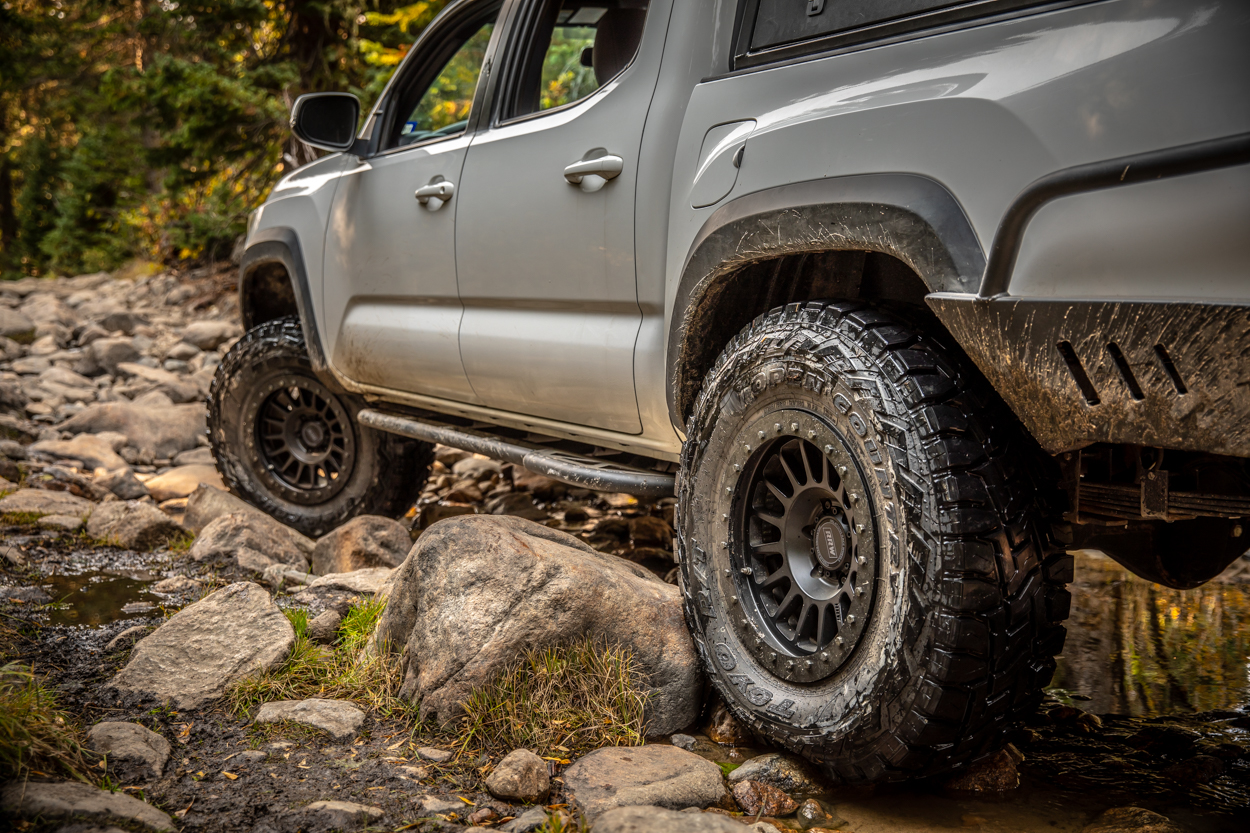
Are you looking to treat yourself to some rock sliders for your rig but you’re bombarded by all of the options and types of sliders out on the market?
Not only are there a ton of companies who build rock sliders for the Tacoma, but you also have the option to choose which kind of steel you would like them to be built with.
There are not a whole lot of resources online that outline the differences and the resources that do exist are sporadic and hard to find. We’ve done our best to compile the information in an easy-to-read, well-organized manner.
All the options can get overwhelming, especially if you’re new to the off-road/overland community. Throughout this article, we’ll go in-depth on the two main types of steel used for sliders: the pros and cons of each and ultimately what would be better suited for your style of trail riding.
Two main types of steel you can buy:
- DOM (Drawn Over Mandrel)
- HREW (Hot Rolled Electric Welded)
Towards the end of the article, we will also dive into mounting options and how they affect overall strength as well as the options you have for coating/painting your sliders.
Without further ado, let’s dive into the differences.
Table Of Contents
DOM (Drawn Over Mandrel)

The DOM (aka Drawn Over Mandrel) is currently the most popular type on the market and is the first one we’ll be breaking down.
Difference between DOM and HREW?
For starters, the DOM tubing typically uses 1020-1026 Mild Carbon Steel, which is the same material used for HREW.
Where they differ is where the DOM tubing goes through an extra manufacturing step to make it stronger. The secondary step encompasses the tubing being cold drawn over a mandrel which ultimately ensures the tubing has a more consistent and precise thickness throughout as well as adding to its overall strength. Also, this helps to make the tubing more seamless.
A DOM set of sliders is inherently going to be stronger since it goes through the extra strengthening step. But, how much stronger does it actually make it?
Steel has two types of strength:
- Yield Strength
- Ultimate Strength
The yield strength is the strength where a certain amount of force is going to deform or bend the tubing, whereas the ultimate strength is a point in which the steel will eventually snap, break, or crack.
DOM tubing generally has a:
- Yield Strength of around 70 KSI (70000 PSI)
- Ultimate Strength of 85 KSI (85000 PSI)
You’re probably wondering why this is important to you. Well, with a higher yield and ultimate strength that means you can put more force onto the slider without it being damaged.
You also might be thinking to yourself that something with a yield strength of 70000 PSI is crazy strong and you won’t ever put your sliders under that kind of strain… However, you’d be surprised how easy it can be.
For example, imagine you are in a situation where your truck is resting on a single point on the slider on a rock. You have your entire truck, all the gear you have on board, including yourself, putting all that weight on a single point on the slider that’s in contact with the rock you’re up against.
Doing a few simple mathematical equations, you can find out how much weight is actually resting on that little point in contact with the rock.
In most cases, it is usually close to, or at, the yield strength. Now add the fact that you might drop the entire weight of a 6,000-pound vehicle onto the sliders from a height of 6-12 inches… That’s A LOT of force.
Weaker steel will definitely be more susceptible to damage and bending.
HREW (Hot Rolled Electric Welded)
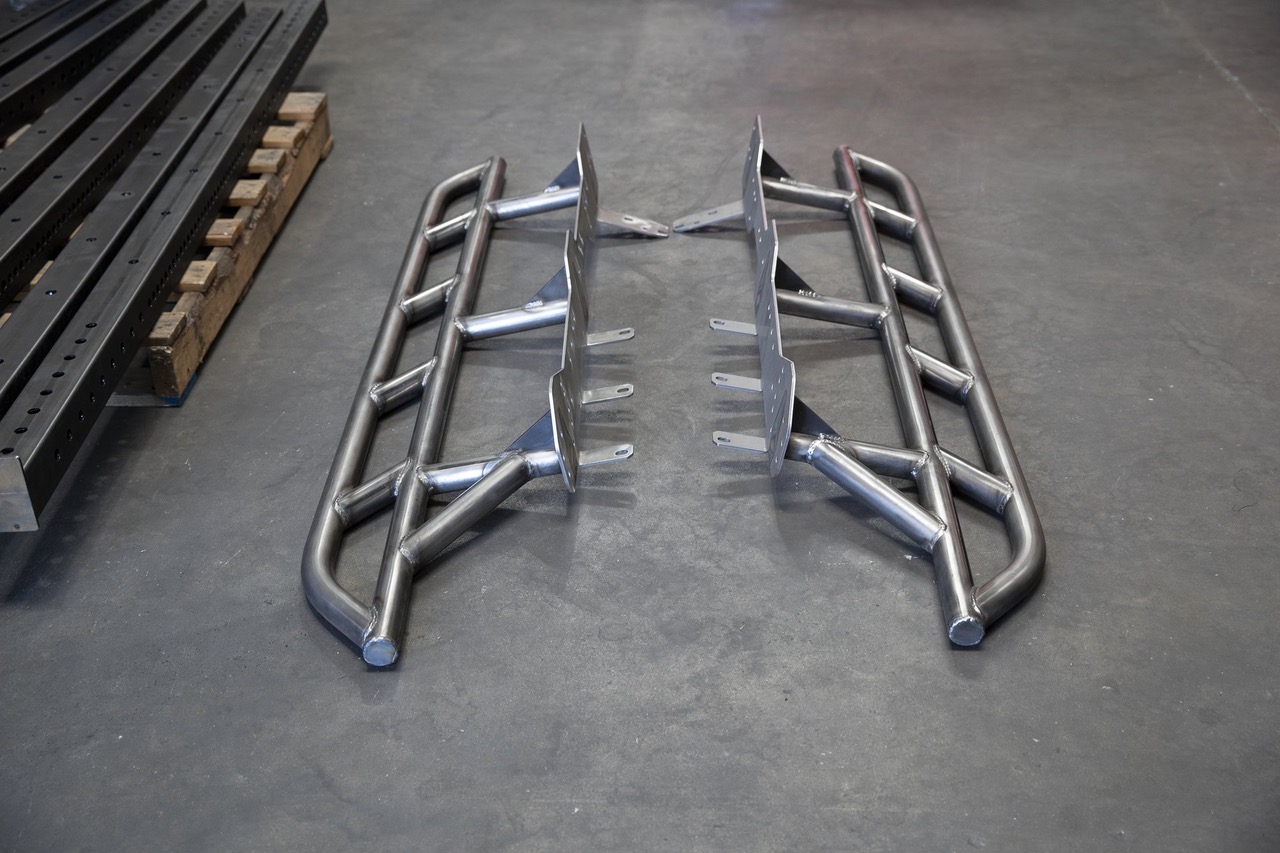
The second type of steel, and the most affordable option, is going to be HREW.
This type of tubing is made out of a 1020 Mild Carbon Steel just like the DOM sliders. HREW does NOT get run through a cold drawn mandrel, making it less strong than a DOM slider.
How much less will the strength be? The Yield Strength is around 40 KSI (40000 PSI) and an Ultimate Strength of 65 KSI (65000 PSI).
Compared to the DOM tubing, the strength of the HREW is quite a bit less. This shouldn’t be a huge turn off because if you are the type of driver who doesn’t do a lot of rock crawling or technical trails, then the threat of potentially damaging your sliders is significantly less.
The price point of these sliders will also run you a bit less than a set of DOM sliders, making it more affordable. However, DOM is beginning to become more of a standard, therefore driving prices closer to HREW levels to stay competitive.
Technical With Tube

Let’s talk steel, specifically, tube.
Let’s face it, we are all tired of trying to find solid answers about what we need for our armor. The HREW and DOM debate is one that has been around for a while, and some tests to show strength by certain brands were done in a way that allows a lot of misunderstanding and confusion. So, let’s try and clear things up, shall we?
First off, HREW and DOM are not types of steel, they are processes. How do you tell them apart? If you are looking at your material, HREW should have a visible seam on the outside defined with a different color, with a matching physical seam on the inside. DOM will be smooth and consistent inside and out. Once part of a structure, and finished in paint or another coating, there should be no discernible difference between the two to the naked eye.
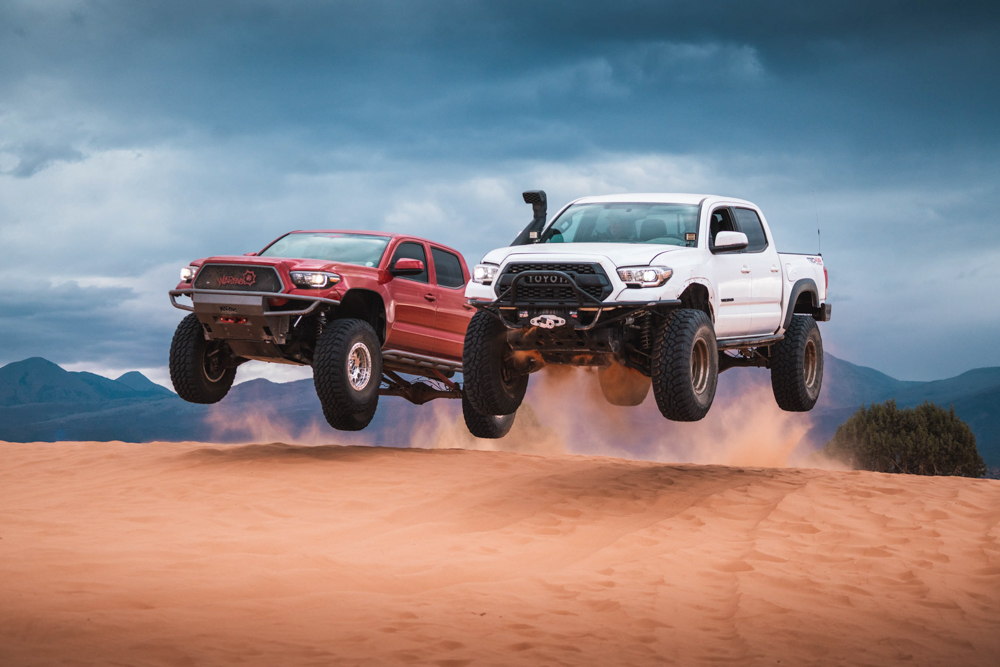
Photo credit: @wp_oliver
DOM is not a seamless steel; it has just undergone another step in the manufacturing process, drawing over a mandrel. This cold working of the material aids in making it more consistent, both in wall thickness and ID (inner diameter), as well as the crystal lattice (atomic arrangement) of the material. These changes and consistencies are part of what makes DOM material “stronger” and more resilient than HREW. How does this strength relate to you and your parts? DOM will generally take more abuse and hits before deforming, aka, denting.
That last bit of information is what most know to be the undoubtable truth. However, it is not that simple. The steel rating, and manufacturing process/tolerances play a large part in the steel’s strength. High quality, American-made steel, even in a HREW finish, will outperform a large majority of the imported tube, even the DOM, it is also generally a fair bit more expensive. As much as HREW vs DOM is a point of interest, steel rating should be as well. Most American suppliers use 1020/1026 rated steels (nominal size and thickness dependent), while imported steels can vary in quality/rating, even from the same plant.
Simply put, not all HREW or DOM is created equal. That is why some manufacturers can offer their DOM products at competitors’ HREW prices (this is not always the case but is something to consider – it does not hurt to call and ask where they source their steel). This is also why some products in HREW hold up great for some folks and not others. Product design, fitment, and steel quality/grade are more likely to affect your experience with the parts, than just the HREW or DOM difference.
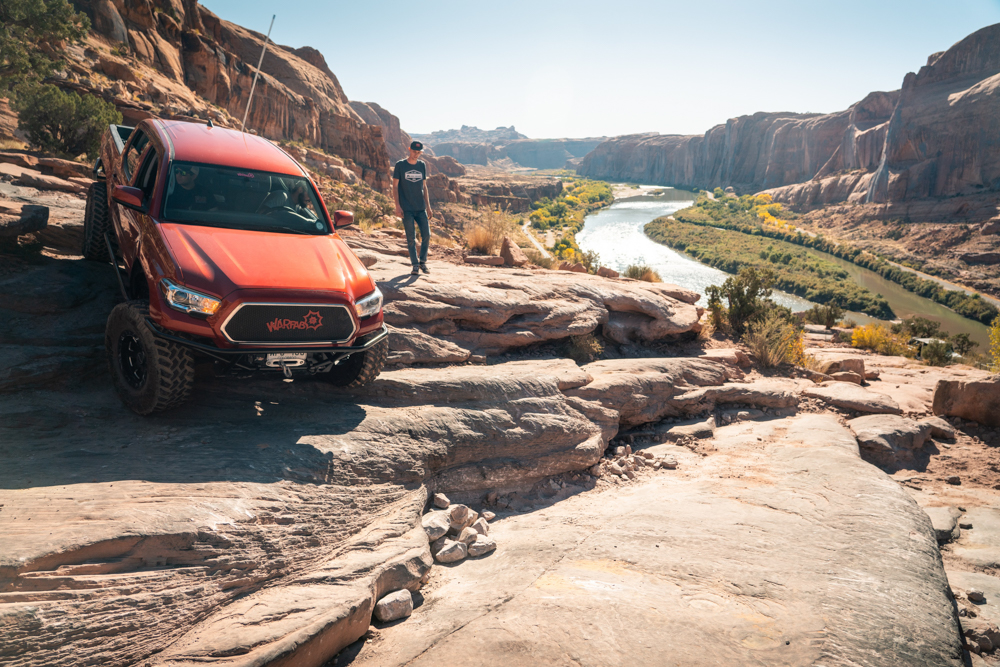
Photo credit: @a.flemster
Now, let’s toss another wrench into the mix. We talked about the steel manufacturing process and rating; but what about size – wall thickness and outside diameter, or O.D.? Strength is determined by two dimensions of tube of a given material: wall thickness, and O.D. A thicker walled tube means more resistance to dents or other damage from impacts, like rocks. However, when it comes to bending, the distance of O.D. to the center axis determines the relative strength. A larger diameter tube, even with a moderately thin wall, can be more rigid than a heavy walled, smaller O.D. tube. Meaning a larger tube can be lighter and stronger than a smaller, thicker option. This is important to know.
Looking at a variety of parts made of different materials, you may not realize DOM from one part may be weaker than the HREW of another part. 2″ O.D. .120 wall tube is going to hold up longer than 1.5″, or even 1.75″ tube of the same thickness. Even if it is HREW to DOM. It is important to think about where the parts are located, and what kind of load they will see, realistically, from your use. Keep in mind, some parts are meant to crumple and give way in order to protect other parts, or even you, the occupant.

Photo credit: @tacoma_goss
But what does this all mean? Well, that part is up to you. Knowing how you plan to use your rig, and the parts you put on it, will really help you determine what you need material-wise. If you are a weekend warrior, where getting to camp might involve some rocks and the occasional tree stump, HREW or cheaper DOM options should serve you just fine. Wheel frequently, but don’t get too crazy because it is your ride to work tomorrow?
Depending on your vehicle’s weight and terrain, HREW is likely fine for you as well. If “full send” and “hold my beer” are in your common wheeling vocabulary, or your rig is a bit overweight, DOM might be more up your alley. A lot of manufacturers will push for DOM as the end-all answer. In short, that’s not inaccurate. Just keep in mind, for most folks, quality HREW parts will work great for what you need. Style, design, fit, bracing, O.D., wall thickness, and purpose are all things to think about. Don’t just buy into the hype.
Have fun, stay the trail, tread lightly, and do it for you, not the gram.
4XInnovations Video
The following video is a great educational tool when it comes to real-world testing of the differences in strength between various rock slider steel options.
Additionally, see this testing datasheet by 4XInnovations. If you love to geek out over technical data, this one is for you!
How To Choose
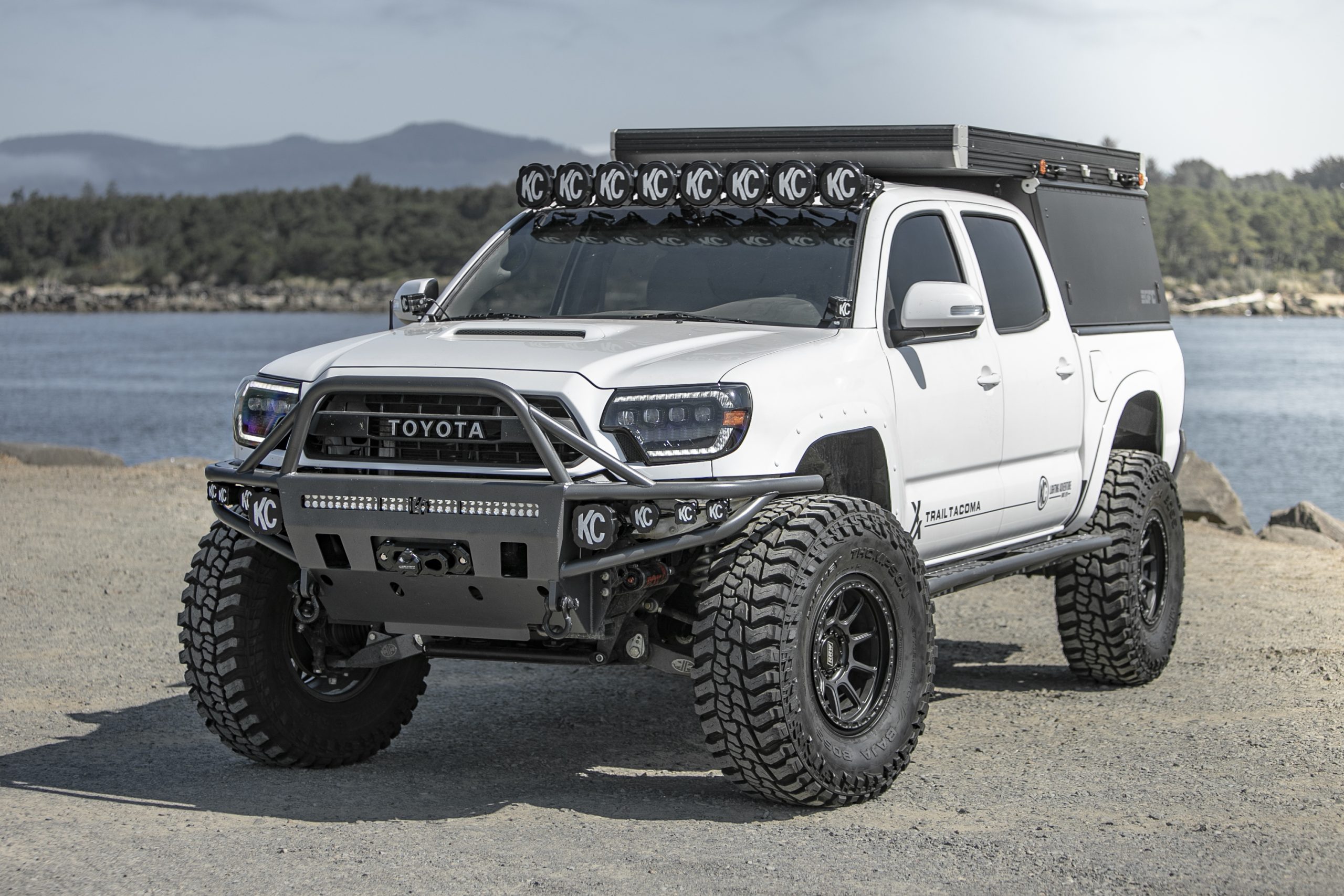
Cost is definitely a factor. Sliders will vary in price quite a bit, which is a large deciding factor for consumers.
Which is more expensive: DOM or HREW?
Generally, DOM sliders are going to be more expensive just because they go through that extra process of strengthening the metal. On the flip side, HREW will be cheaper since it’s easier to manufacture.
Sliders can vary between $500 (on the lower end) and $1200 (on the higher end). You might be wondering why the price gap is so large. Usually, the more expensive sliders will be better since they are made with a lot of attention to detail and by a company with a lot of experience. Some less expensive sliders may be made in bulk on an assembly line, where the quality control may be lacking, or a newer company. Again, the type of steel also affects the price.
Technical Off-Roading & Rock Crawling: DOM
To sum it up as shortly as possible, if you plan on doing a fair amount of trails with big rocks and a high potential for damaging your door and rocker panels, get DOM. Guys (and gals) who wheel heavily will want DOM, without question. You will never have to worry about purchasing another set again.
Overlanding and Moderate Off-Roading: HREW
On the flip side, if you don’t want to spend a ton of money but just want to protect the side of your truck from the occasional rock or tree stump, and you still to more overland style travel, then go for HREW. Funny enough, I’ve seen a couple of fabricators running HREW intentionally to show that HREW also offers a good degree of protection. The point is, don’t be afraid of HREW. It’s still steel and it’s still plenty strong.
In the end, you can’t go wrong with either option. It boils down to your specific needs. Regardless of your choice, DOM and HREW sliders will ensure you and your truck are protected and that you get home without excessive damage at the end of a long day on the trails.
DOM Pro
- Stronger (higher yield/ultimate strength)
DOM Con
- Usually more expensive
HREW Pro
- More budget-friendly
- Still plenty strong for most applications
HREW Con
- Weaker (lower yield/ultimate strength)
Mounting Options
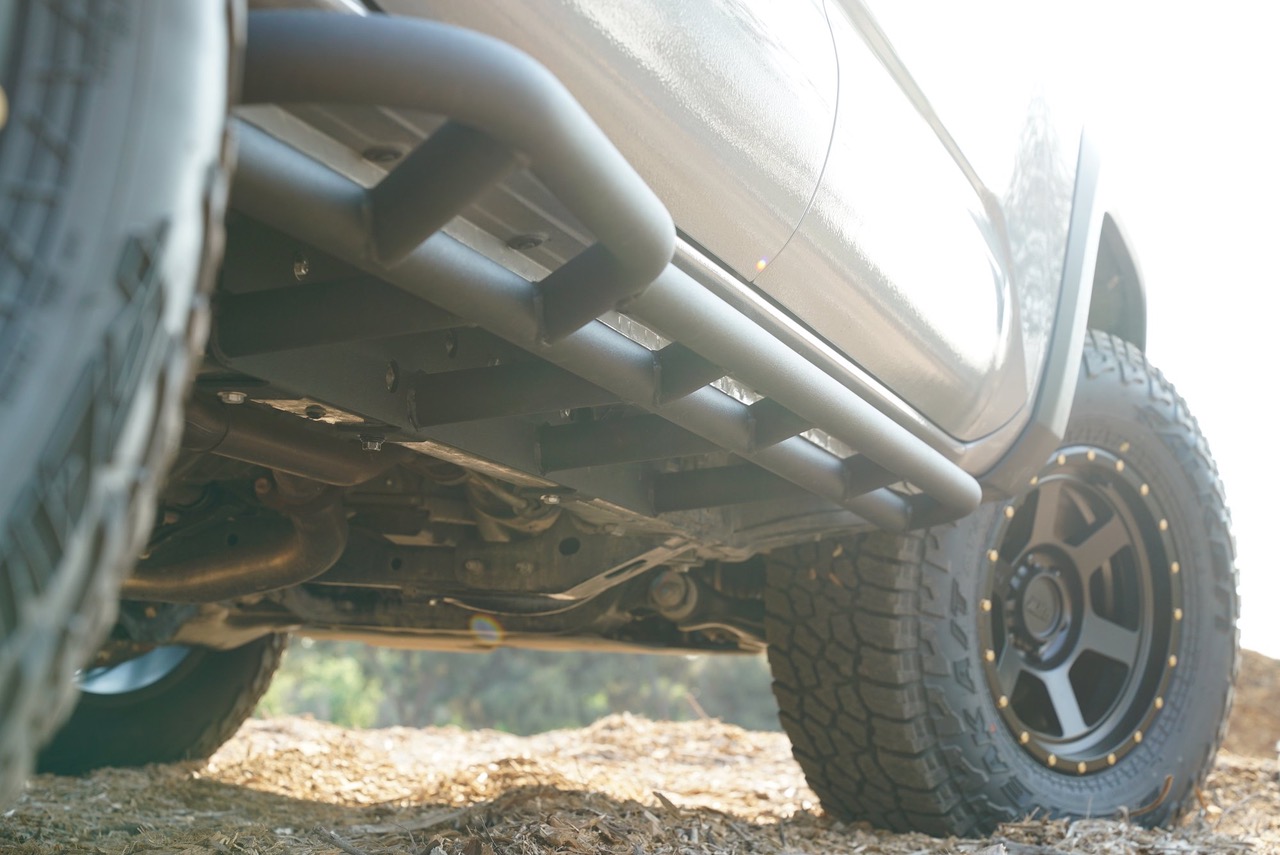
If you didn’t know already, you have two options for mounting the sliders to your truck:
- Bolt-on
- Weld-on
Bolt-On
Bolt-on is the easiest and most convenient to do but, there are some things to take into consideration. If you decide to bolt the sliders onto your truck, they bolt directly onto the frame. If you are in a scenario like I mentioned above, where you are resting on the slider at an angle with the weight of the truck on it, there is a chance you might bend the mounting plate, or break a bolt.
Breaking bolts and (serious) damage to bolt-on sliders is not a very common occurrence, but it is definitely more likely.
Not only is the slider under yield and ultimate strength but the bolt is too. There is an argument that due to the larger mounting surface, bolt-on sliders might actually dissipate the force from an impact better than weld-on. That, however, is a topic for another time. Also, for reference, most every slider option on the market is bolt-on now.
Weld-On
The other option is weld-on, and in general, weld-on is the safer way to go since it’s significantly stronger than a bolt-on — at least as far as comparing the strength of a weld to a bolt goes. Cue the previously mentioned argument. One of the reasons people shy away from weld-on sliders is having access for someone to weld them on and weld them on properly.
There’s also the issue of working on the rocker panel, door, or anything near the sliders. If you really need complete access, you’d need to cut your sliders off. Not ideal. The overall trend is that weld-on sliders will also run cheaper than bolt-on ones.
Finish Options
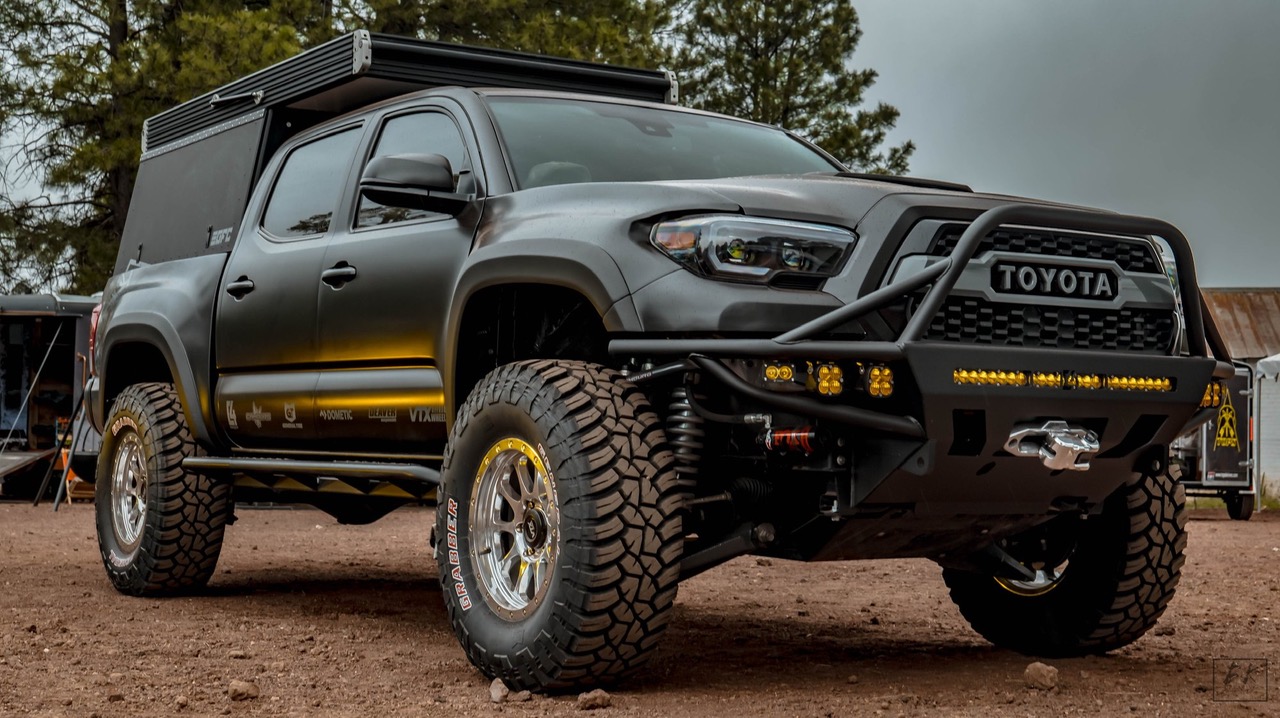
After you’ve decided what sliders to buy, you’ll need to get them painted. Usually, most companies will either offer powder coating, some sort of bed liner or just leaving the sliders bare steel.
Powder Coating
Powder coating is going to be the cleanest and one of the easier options to touch up. Most guys sand their sliders after a tough season and repaint them with a rattle can that matches their original finish.
Bed Liner
Bed liner can look good but will also scratch and once scraped against a rock, it may start to peel. Unfortunately, they are harder to touch up when you have a chip or scratch. If you’re unfamiliar with bed liner, it is typically a rubberized spray. This can also add some extra weight to your slider. In the bigger picture, that is not really a factor.
Raw / DIY
The last option will be getting them raw, which will be the cheapest option. If you want to paint them at home, spray paint is your best bet. Spray paint will be the cheapest option and can look really good if done carefully and correctly. It is easy to touch up if you get a chip or scratch as well.
Check out prepping and painting bare metal parts.
Final Thoughts
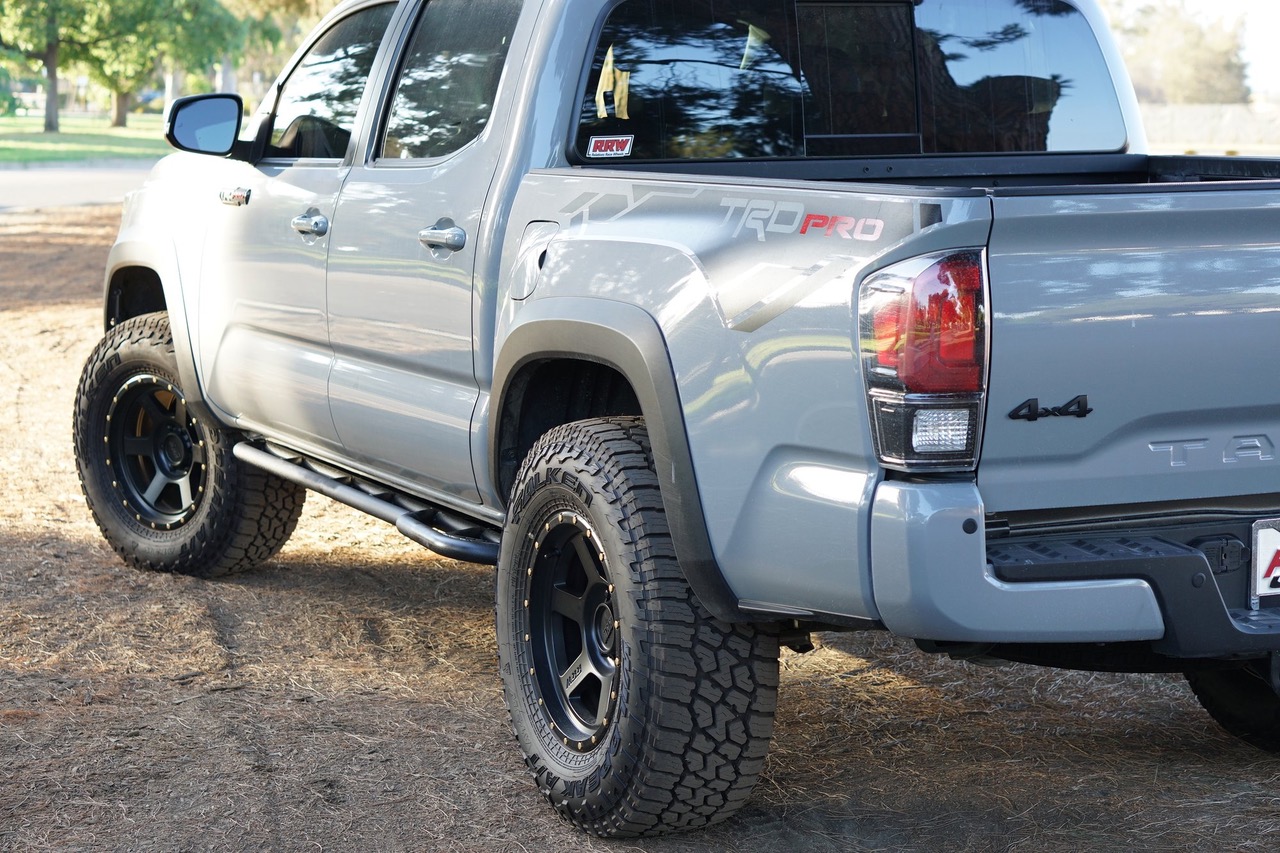
That should just about cover everything and anything you need to know on your slider-buying journey.
I hope that clarifies a few things and makes your decision a bit easier. Carefully consider how you’ll be using your truck before you make a final choice. Think about where your build is now, where it will be soon, and how it’s going to look eventually, and buy the slider that’s best for you!


Very well put together article. Great information and I like that you included some videos, the drop test was great. Will definitely help make my decision easier. Well done
Thanks, Kelcey! Finding good information on this topic, even with a thorough search, was tough. We did our best to compile everything you need to know.
I have DOM sliders but didn’t really know what I had until I read this. Thanks for the article!
Glad you found it useful! Thanks for reading.